Kyoko Idetsu
9 rue des Cascades, Paris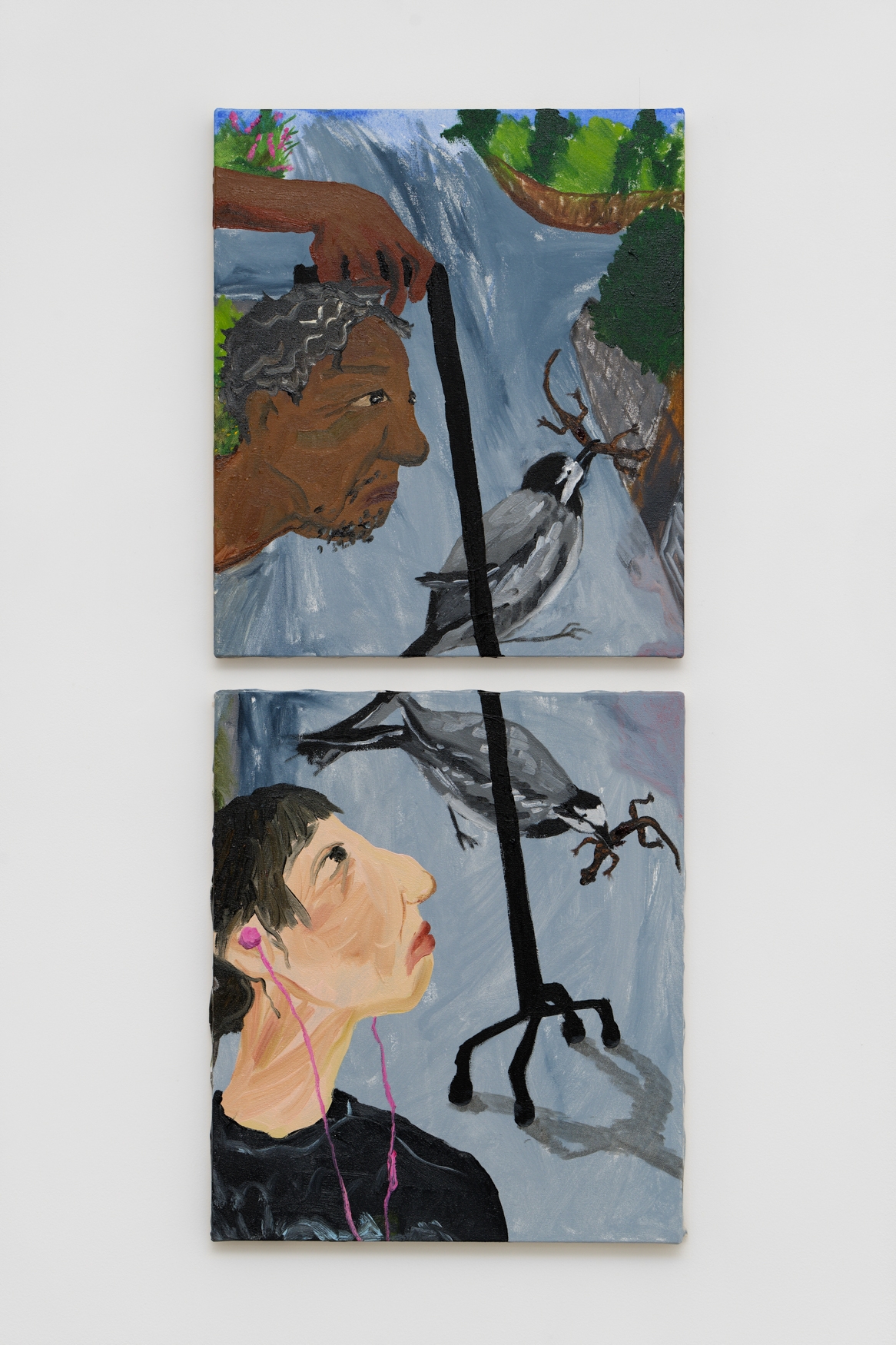
Inhabited by characters with broadly, intentionally simplified traits and postures, with hyper-expressive faces that contrast with the hieratic aspect of their bodies, in scenes that are side by side, or are superimposed on the canvas with no chronology or apparent rationale, like vignettes, Kyoko Idetsu’s paintings immediately plunge the spectator into a highly original synthesis of several histories of art.
The painting is not on a surface, but on a plane which is imagined, stated Philip Guston. With Kyoko Idetsu, the composition of the painting is astonishingly free. The world is apprehended by drawing, and a large dose of spontaneity. With no use of chiaroscuro, but with lively strokes, clear lines and determined colours. A pattern often criss-crosses the background of a canvas: it’s a street, the map of a town, or tiling. The characters are often far too big for the scale of the background and this discrepancy makes them alien to their own environment.
Kyoko Idetsu does not truncate spaces and figures out of derision, but according to her interpretation, clearly linked to her own emotions when confronted by the most common situations of everyday life. She depicts episodes of silent recreation with simple rhythms and a machinal communication. Her personal pictorial science is thus an inhabited topography, tinged by both the burlesque and melancholy. There is more at stake than first seems. The point is to underline what connects people together, on a daily basis, by simple looks, gestures and words, while identifying, through ordinary epiphanies, that little part of humanity which capitalism has not yet totally recuperated. “To be cared for is the invisible substructure of autonomy, the necessary work brought about by the weakness of a human body across the span of life. Our gaze into the world is sometimes a needy one, a face that says ‘love me’, by which it means something like ‘bring me some soup’”, wrote Anne Boyer in The Undying, published in 2019.
A nurse with a rundown battery, and the possibly rather paternalistic commentary of the doctor accompanying her, a home-nurse snacking to pass the time, because they elude “uniform and banal perfections”, in the words of James Ensor. Failings, which are in principle harmless, but which can become irritations. A little malaise in civilisation? Even if Kyoko Idetsu doesn’t press the point, she suggests the context of her paintings by using a brief narrative. It is not a title, nor an allegory, it is rather an identification as in a testimony. Using a very narrow thread which is sometimes drawn towards the grotesque, and sometimes caricature, Kyoko Idetsu weaves a muted commentary on the society around her, a highly normative Japanese society, in which the sense of collective duty dominates individual rights. A society in which women obtain only the places they manage to make for themselves, with great abnegation.
Peuplée de personnages aux traits et aux postures largement et volontairement simplifiés, de visages hyper-expressifs qui contrastent avec l’aspect hiératique des corps, de scènes qui se côtoient ou se superposent sans chronologie ou logique apparente sur la toile à la façon de vignettes, la peinture de Kyoko Idetsu plonge d’emblée son public dans une synthèse très originale de plusieurs histoires de la peinture.
La peinture ne se fait pas sur une surface mais sur un plan que l’on imagine disait Philip Guston. Chez Kyoko Idetsu, la composition de la peinture est d’une liberté inouïe. Le monde y est appréhendé par le dessin, avec une grande dose de spontanéité. Sans recours au clair obscur, mais avec un trait vif, des lignes franches, des couleurs décidées. Souvent un motif quadrille l’arrière-plan de la toile : c’est une rue, le plan d’une ville, un carrelage. Les personnages sont souvent beaucoup trop grands pour l’échelle de l’arrière-plan et ce décalage les rend étrangers à leur propre environnement.
Kyoko Idetsu ne tronque pas les espaces et les figures par dérision mais selon son interprétation, certainement liée à ses propres émotions face aux situations les plus banales du quotidien. Elle représente des épisodes de recréation muette de rythmes simples, de communication machinale. Sa science picturale personnelle est donc une topographie habitée, à la fois empreinte de burlesque et de mélancolie. L’enjeu est plus fort qu’il n’y paraît. Il s’agit de souligner ce qui lie les gens entre eux, au jour le jour, par de simples regards, gestes, paroles, d’identifier, par des épiphanies ordinaires cette petite part d’humanité que le capitalisme n’a pas totalement fini de récupérer encore. « To be cared for is the invisible substructure of autonomy, the necessary work brought about by the weakness of a human body across the span of life. Our gaze into the world is sometimes a needy one, a face that says ‘love me’, by which it means something like ‘bring me some soup’. » écrit Anne Boyer dans The Undying, paru en 2019.
Une infirmière en panne de batterie, et le commentaire peut-être un peu paternaliste, du médecin qui l’accompagne, une garde-malade qui grignote pour couper la journée, une mère qui rencontre toujours la même histoire. Elle épingle de tendres défauts. Les défauts l’intéressent plus que les qualités, car ils échappent « aux perfections uniformes et
banales » selon les mots de James Ensor. Des défauts, a priori anodins, qui peuvent se transformer en irritations. Petit malaise dans la civilisation? Même si Kyoko Idetsu n’enfonce pas le clou, elle suggère, par un bref récit le contexte de sa peinture. Ce n’est pas un titre, ni une allégorie, c’est plutôt à identifier du côté du témoignage. Par un fil très ténu qui tire parfois du côté du grotesque, parfois du côté de la caricature, Kyoko Idetsu tisse un commentaire en sourdine sur la société qui l’entoure, une société japonaise très normée, dans laquelle le sens du devoir collectif l’emporte sur celui du droit individuel. Une société où les femmes n’ont que la place qu’elles parviennent à se faire, avec beaucoup d’abnégation.
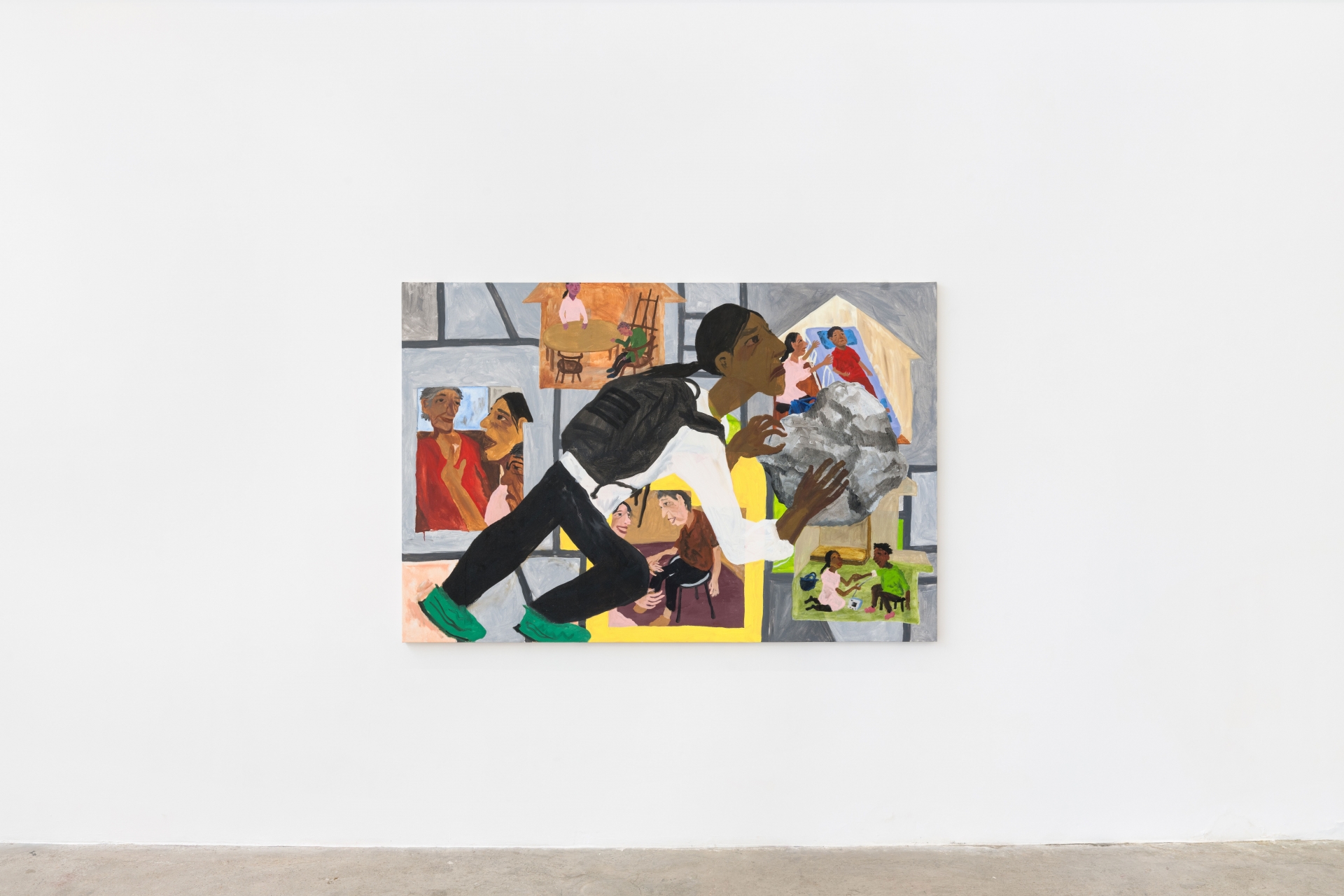
HP, 2023, Oil on canvas, 130,3 × 194 cm
«The electric bicycle with a dead battery is so heavy, like a lump of iron» she said, the nurse.
Upon hearing this, the elderly doctor remarked, «You seem to have quite some horsepower.»
電池の切れた電動自転車は、死ぬほど重たくて、鉄の塊だ。と看護師の彼女は言っていました。そ れを聞いていた医師のおじいさんは、「君は馬力がありそうだもんな。」と言っていました。
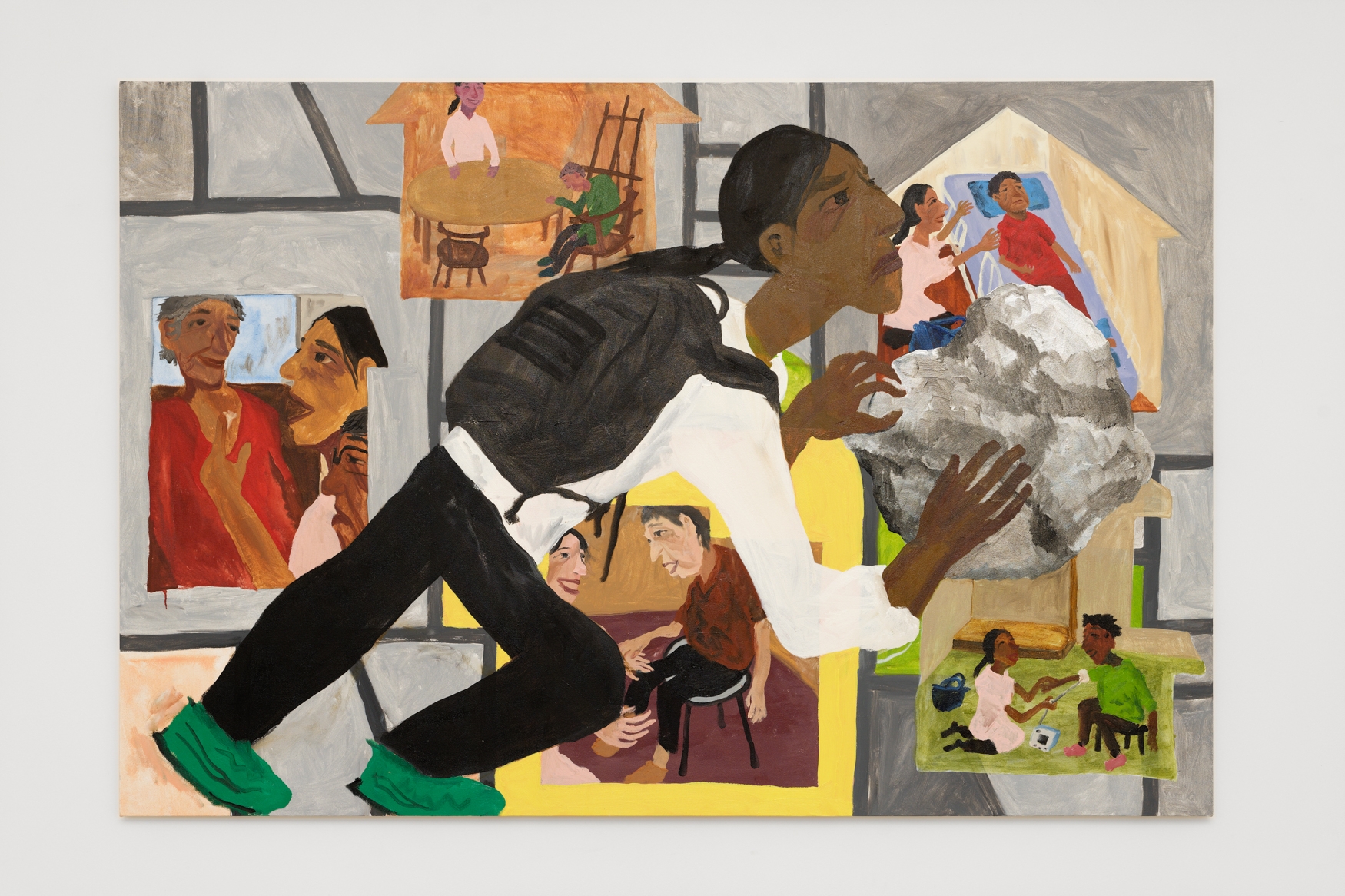
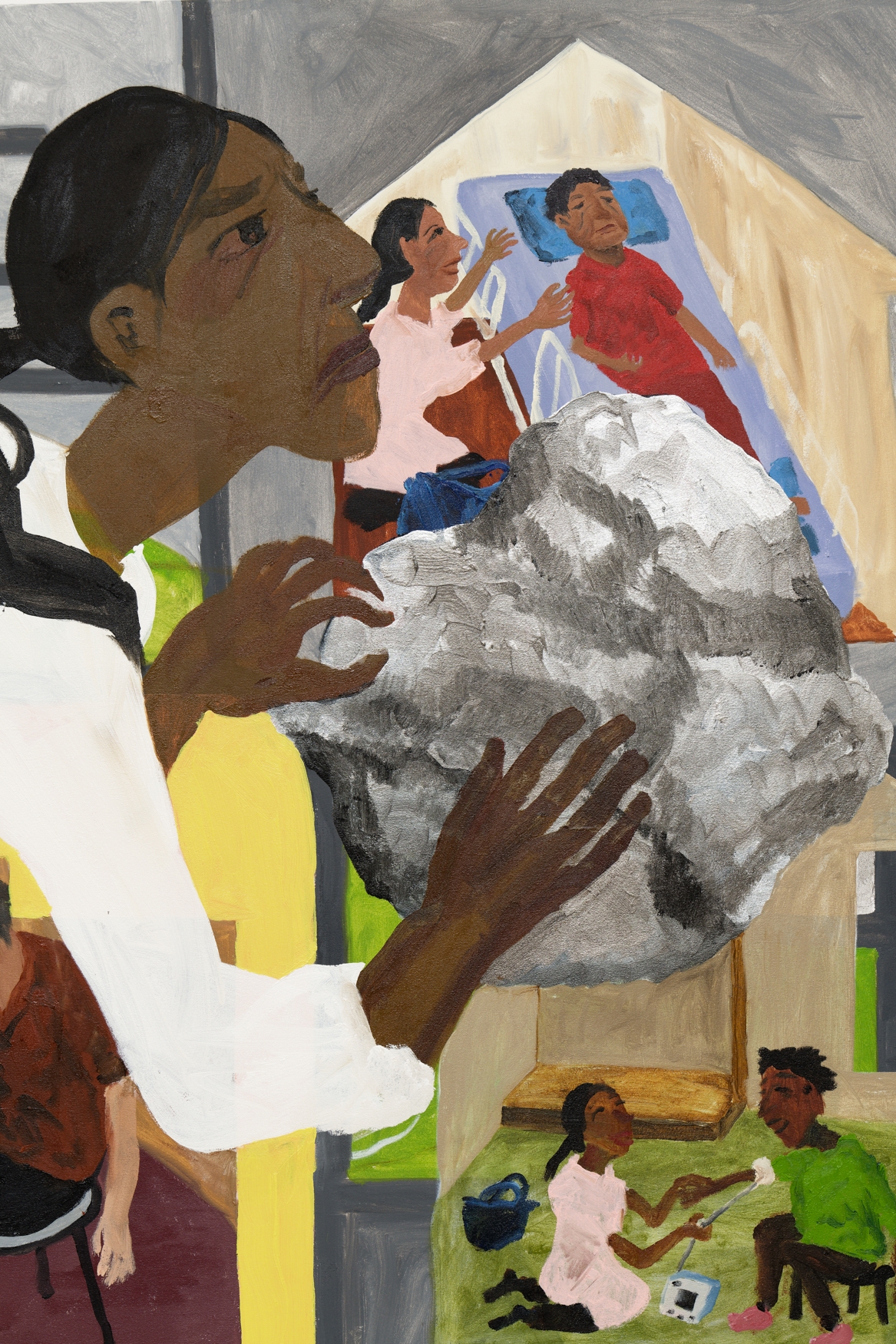
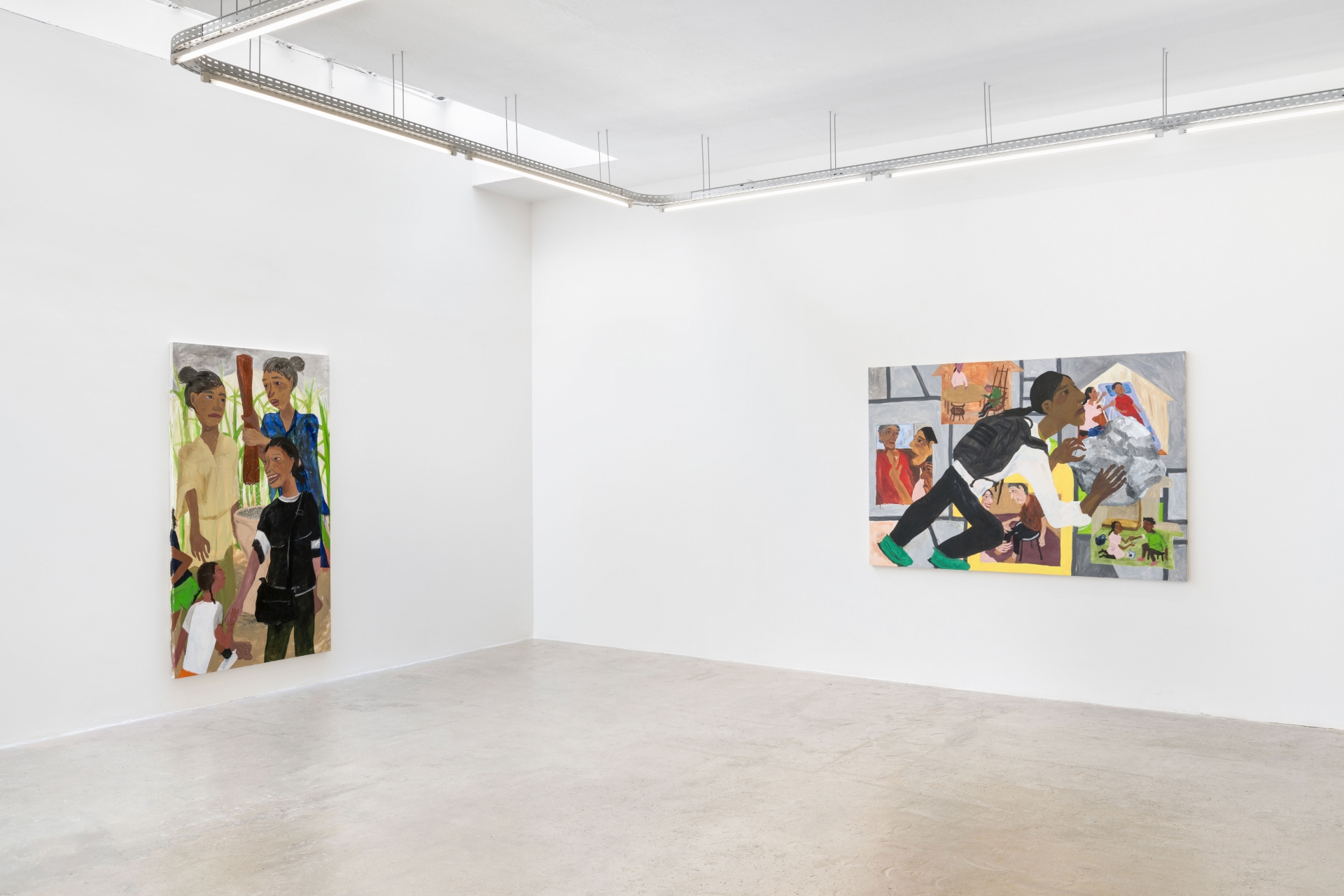
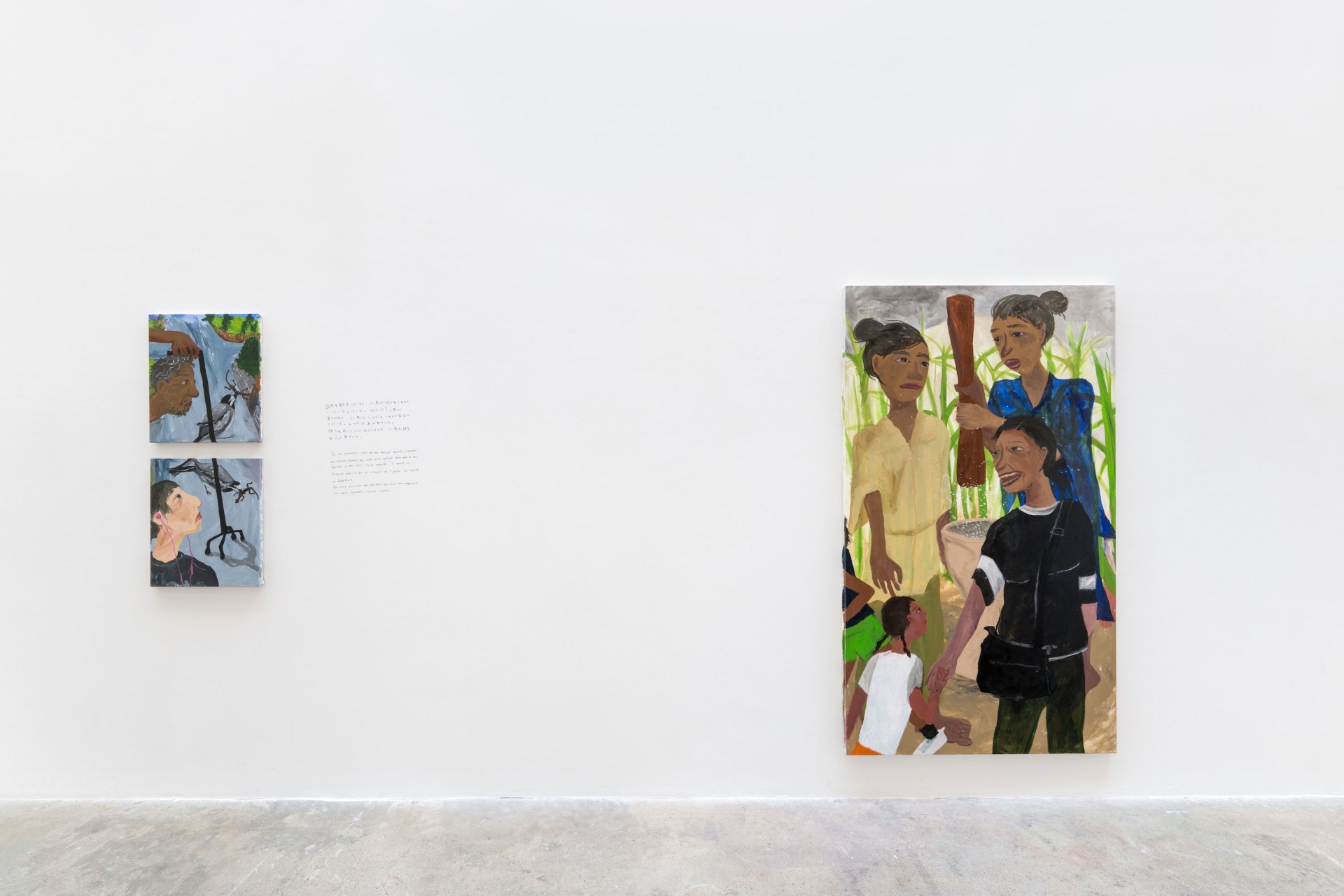

Polish rice, 2023, Oil on canvas, 194 × 112 cm
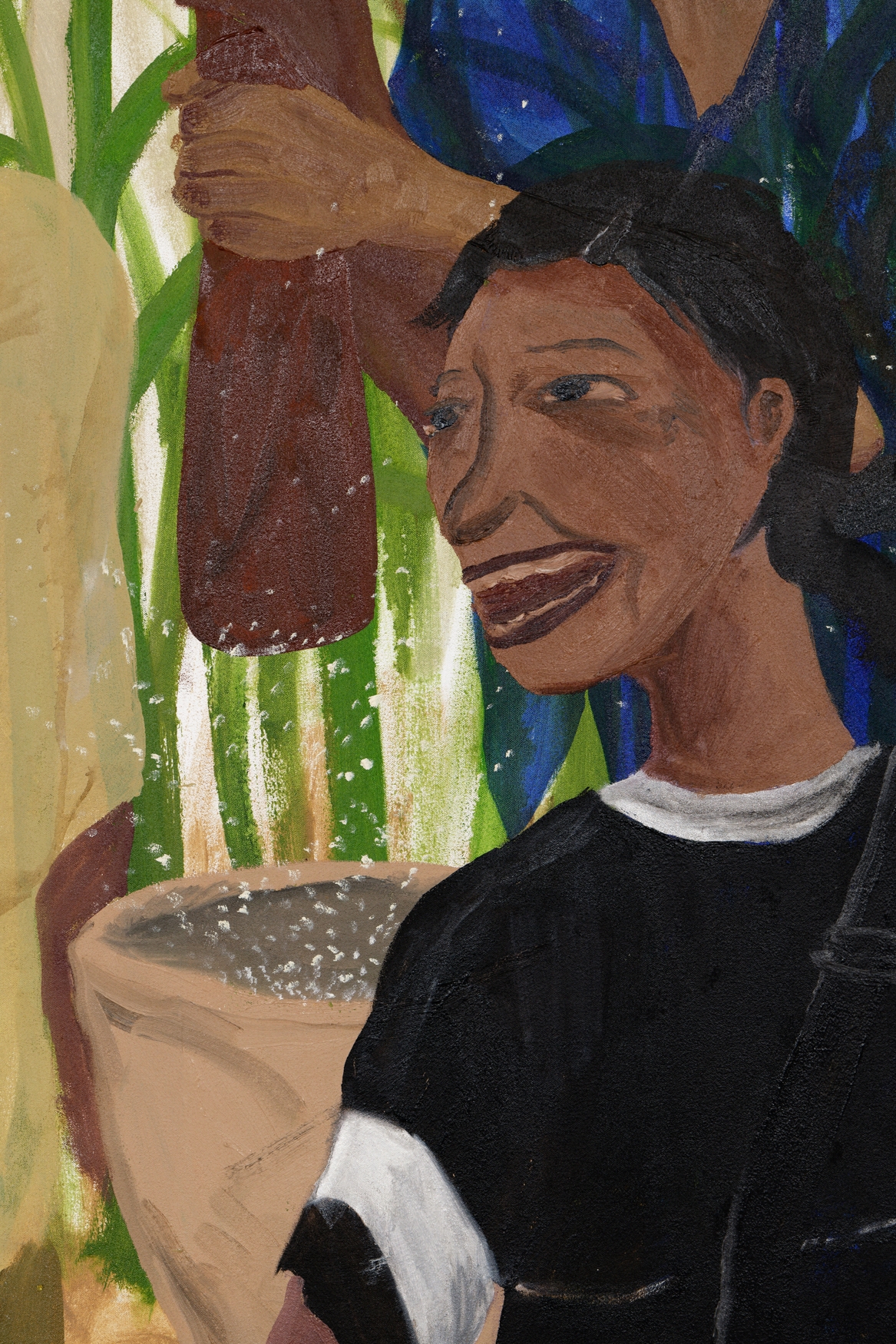
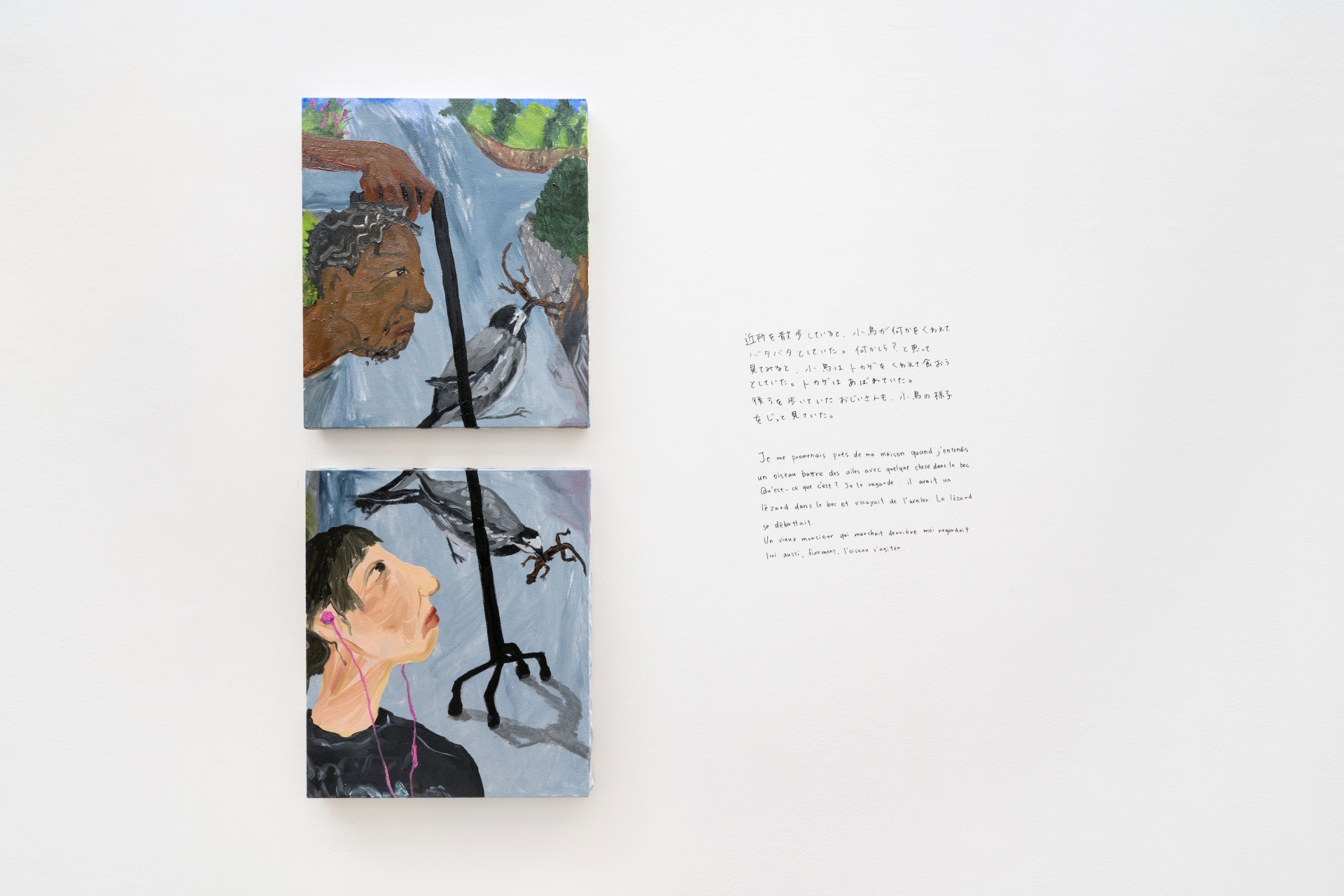
Today’s Grotesque, 2023, Oil on canvas, 55 × 46 cm (each)

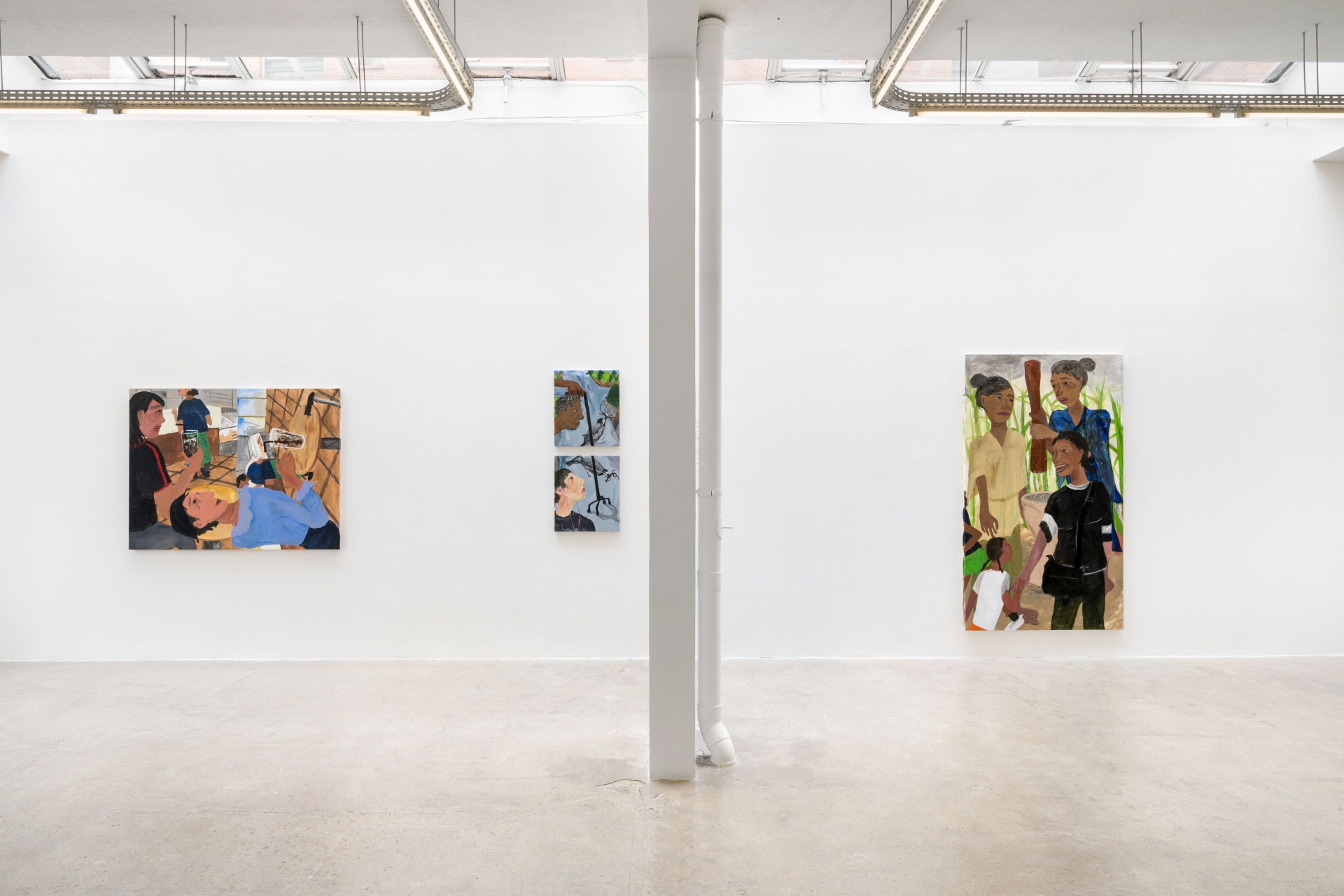
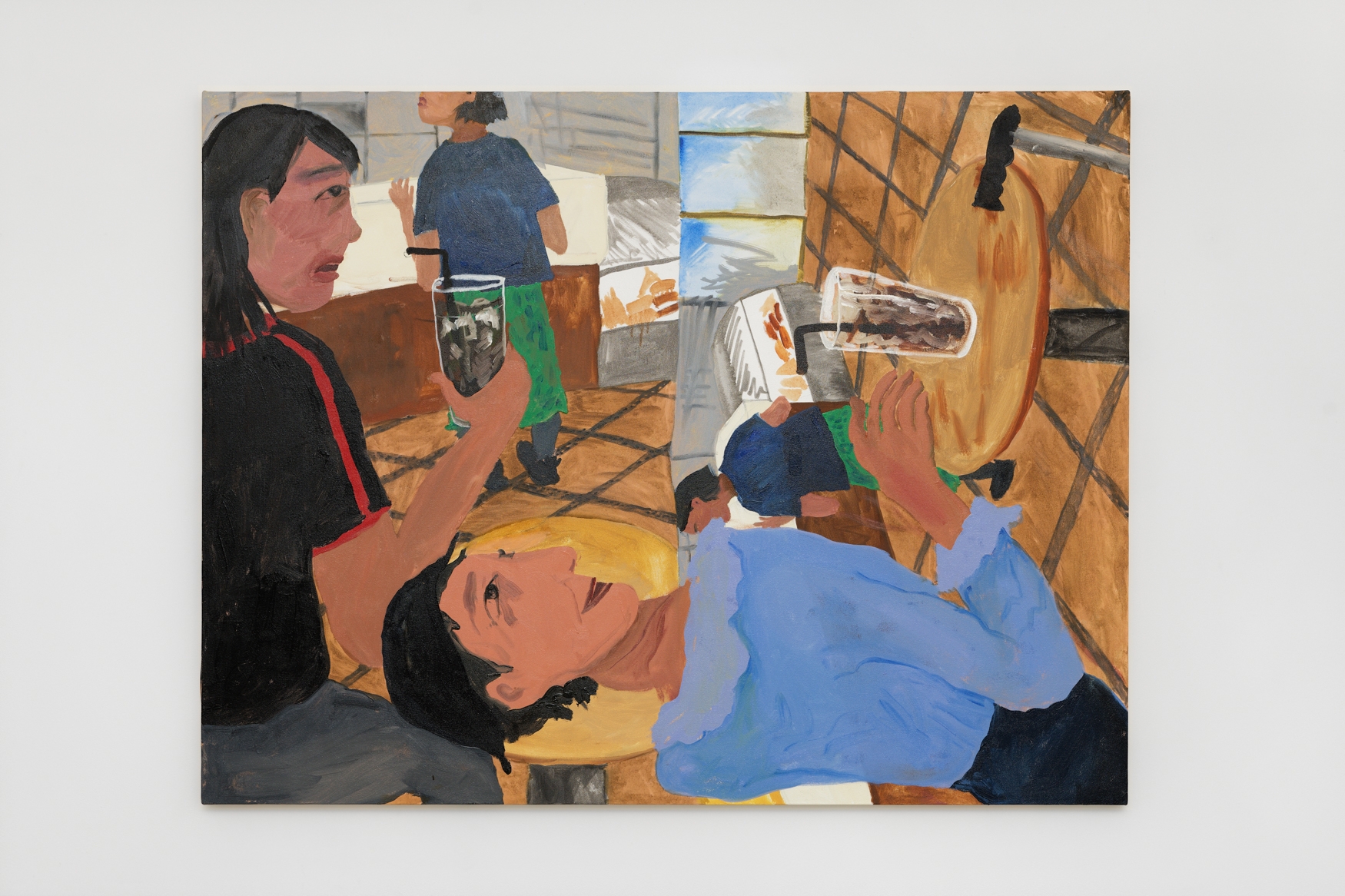
I’m so happy to see you, 2023, Oil on canvas, 112 × 145,5 cm
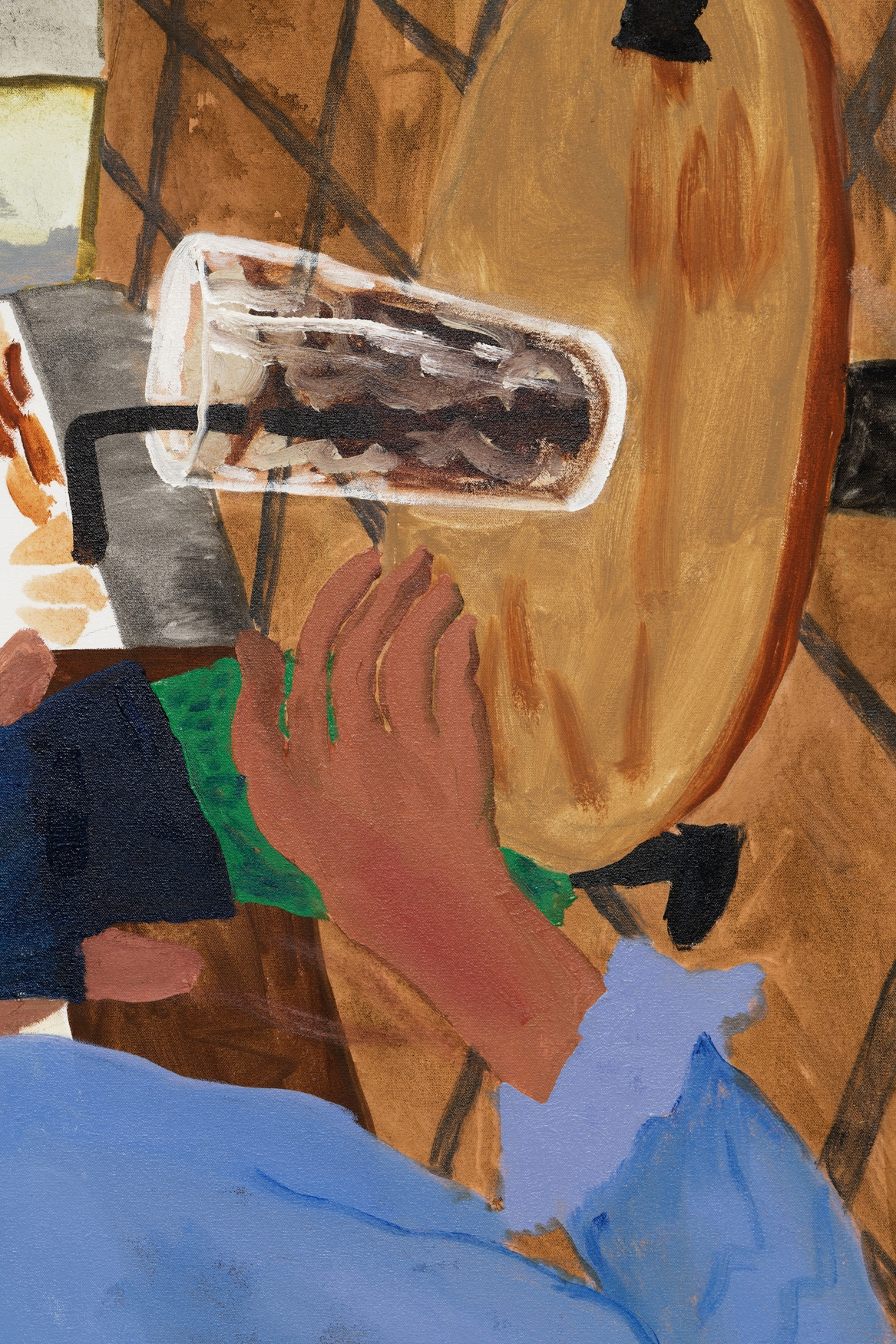


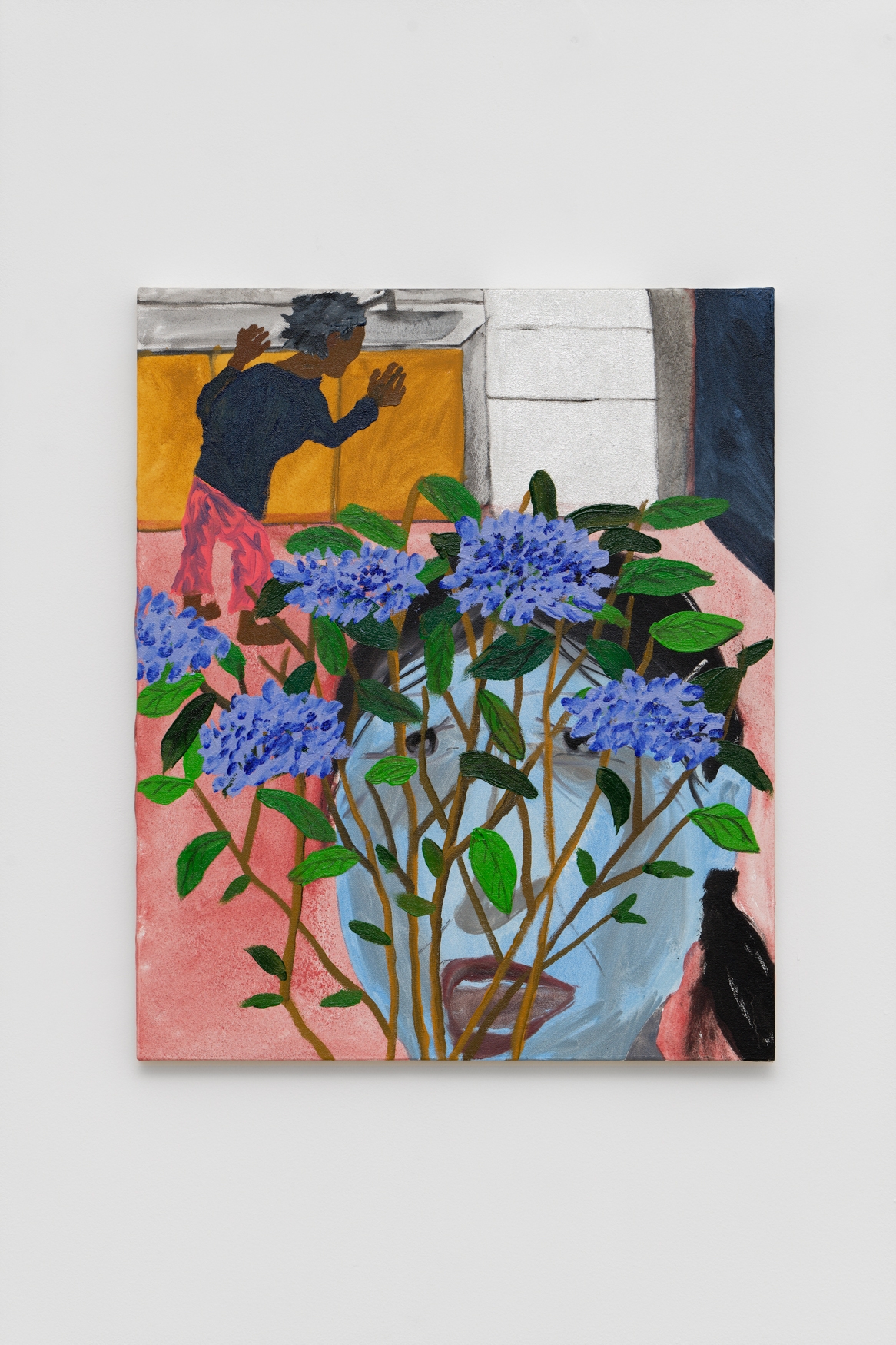
I’m afraid of hydrangeas, 2023, Oil on canvas, 60,6 × 50 cm
She, working as a nurse, mentioned that hydrangeas have such strong vitality that it can be a bit intimidating.
On that day, she was also talking about elderly people living alone.
看護師をしている彼女は、あじさいって、生命力強すぎて、怖くないですか?と言っていまし た。その日、彼女は、高齢者の独居についても話していました。
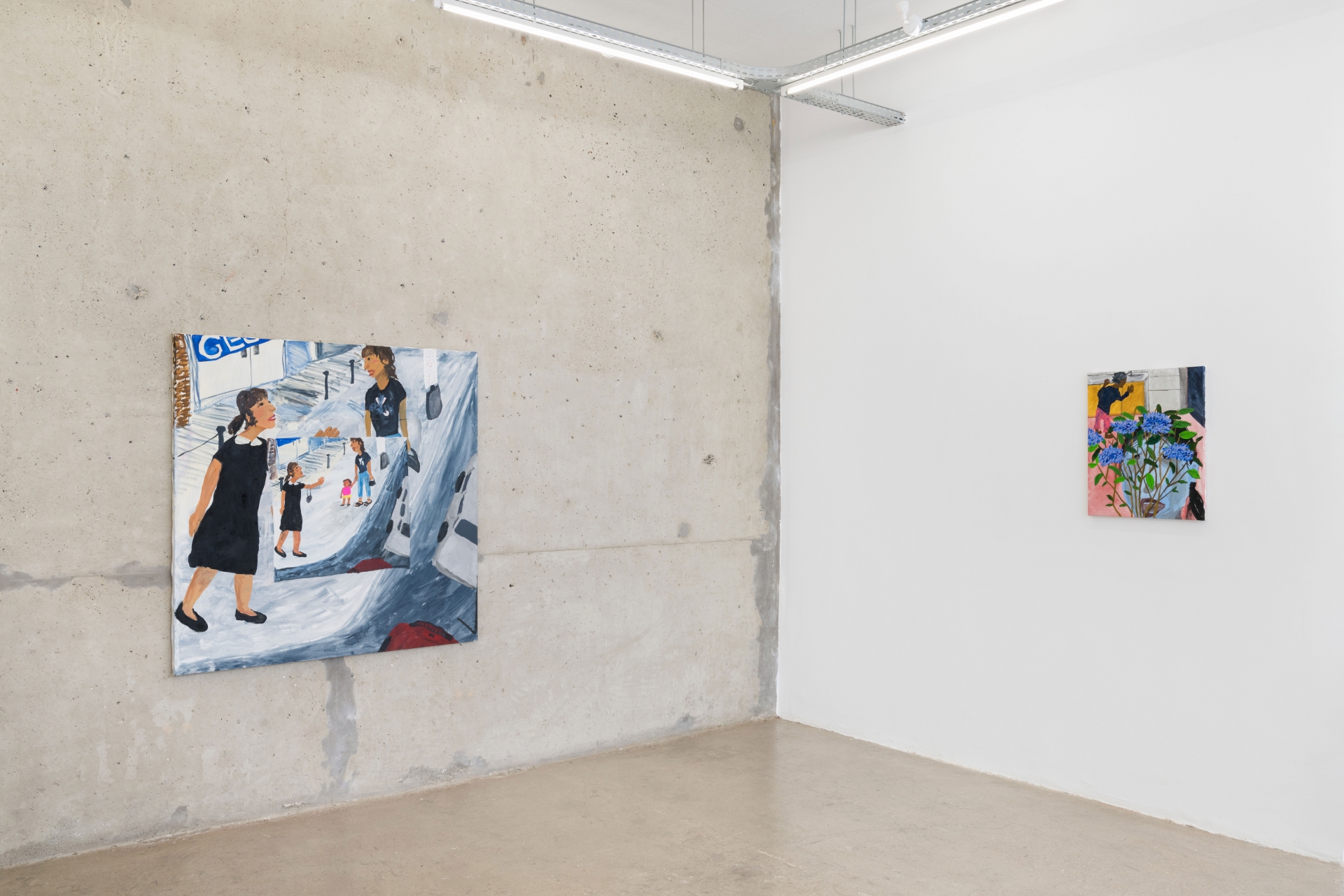
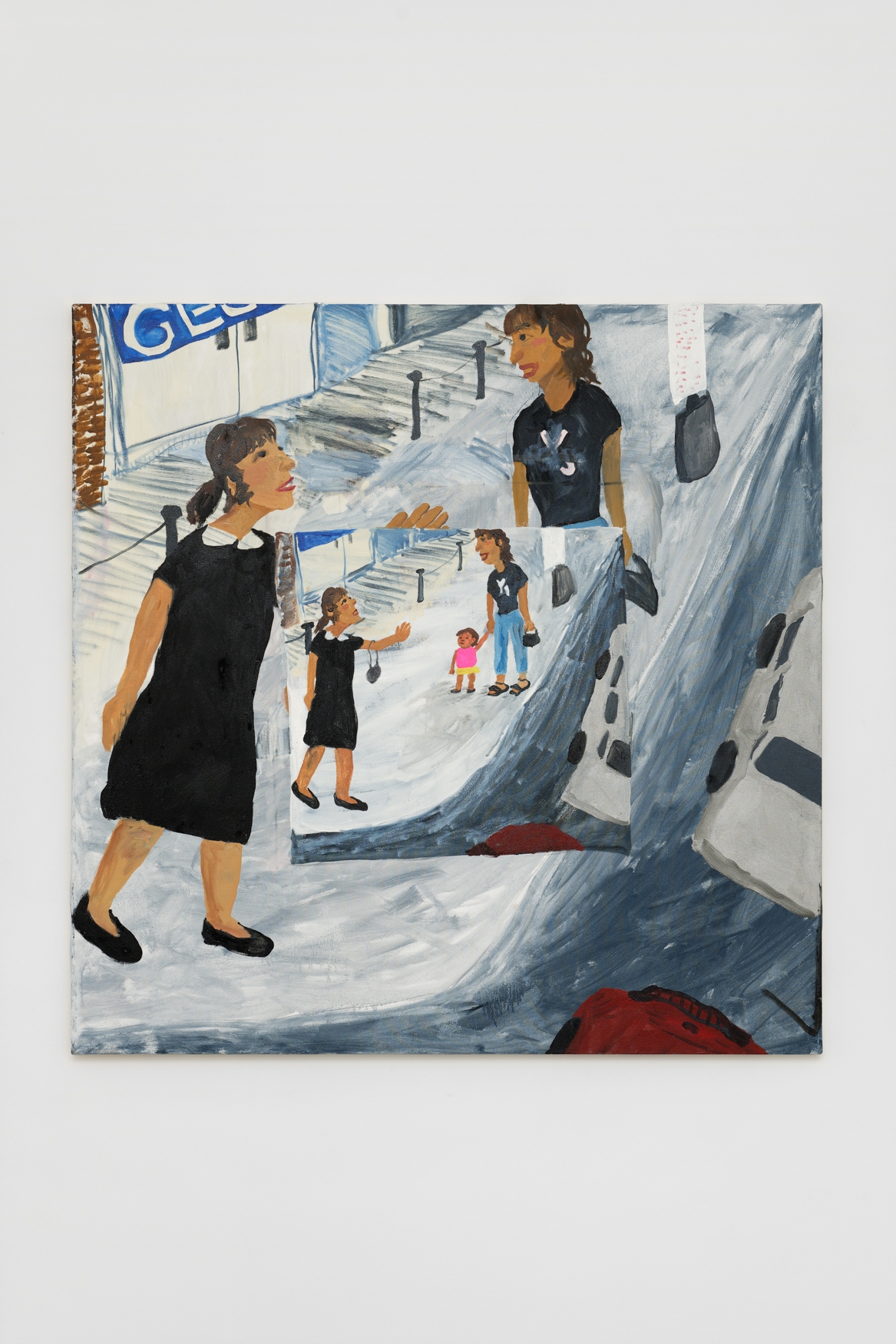
Same story, 2023, Oil on canvas, 112 × 145,5 cm
My mother and her friend have been friends for many years.
Over the years, they have often repeated the same stories.
私の母と、その友達は、長年友達です。長年、いつも同じ話を繰り返ししています
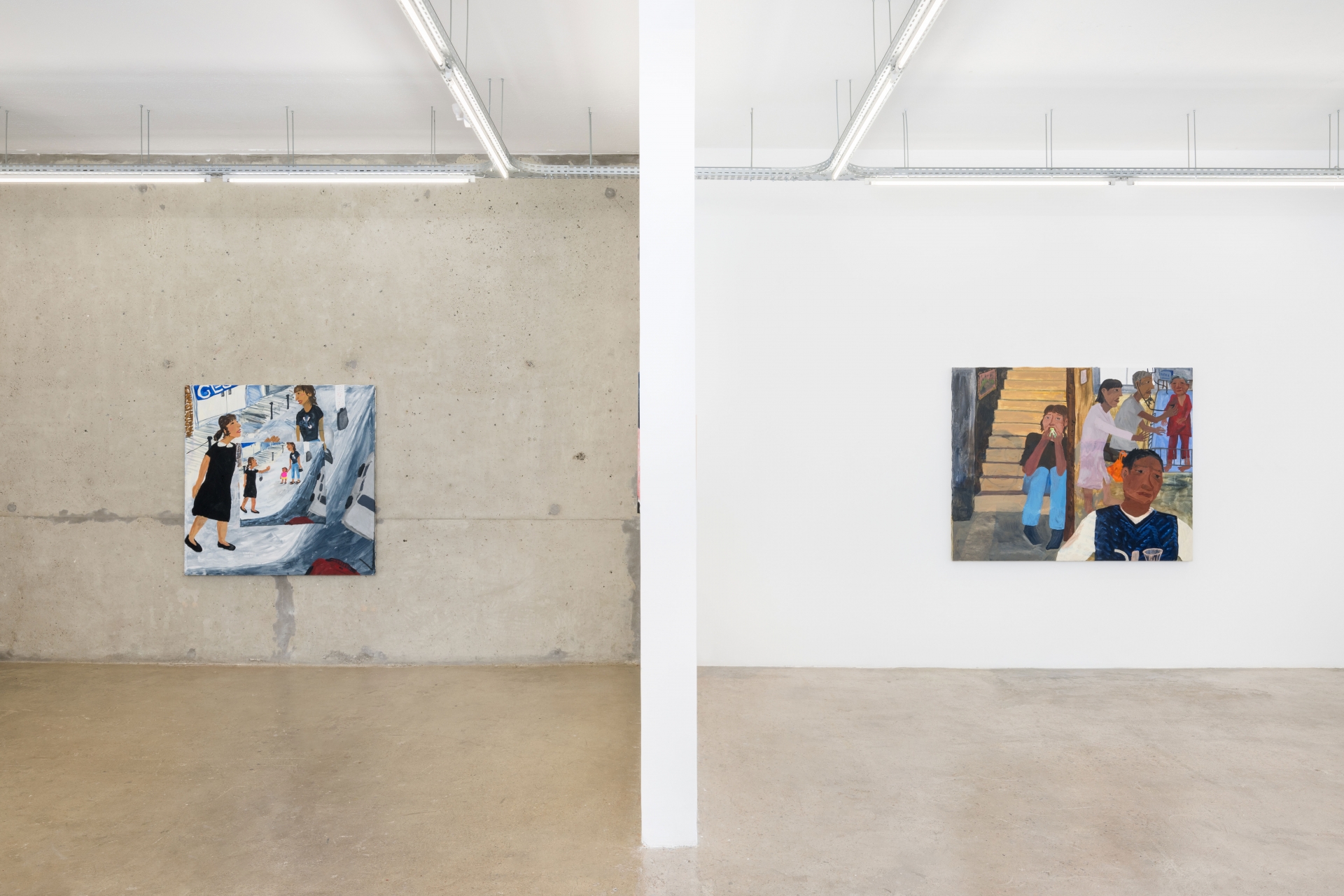

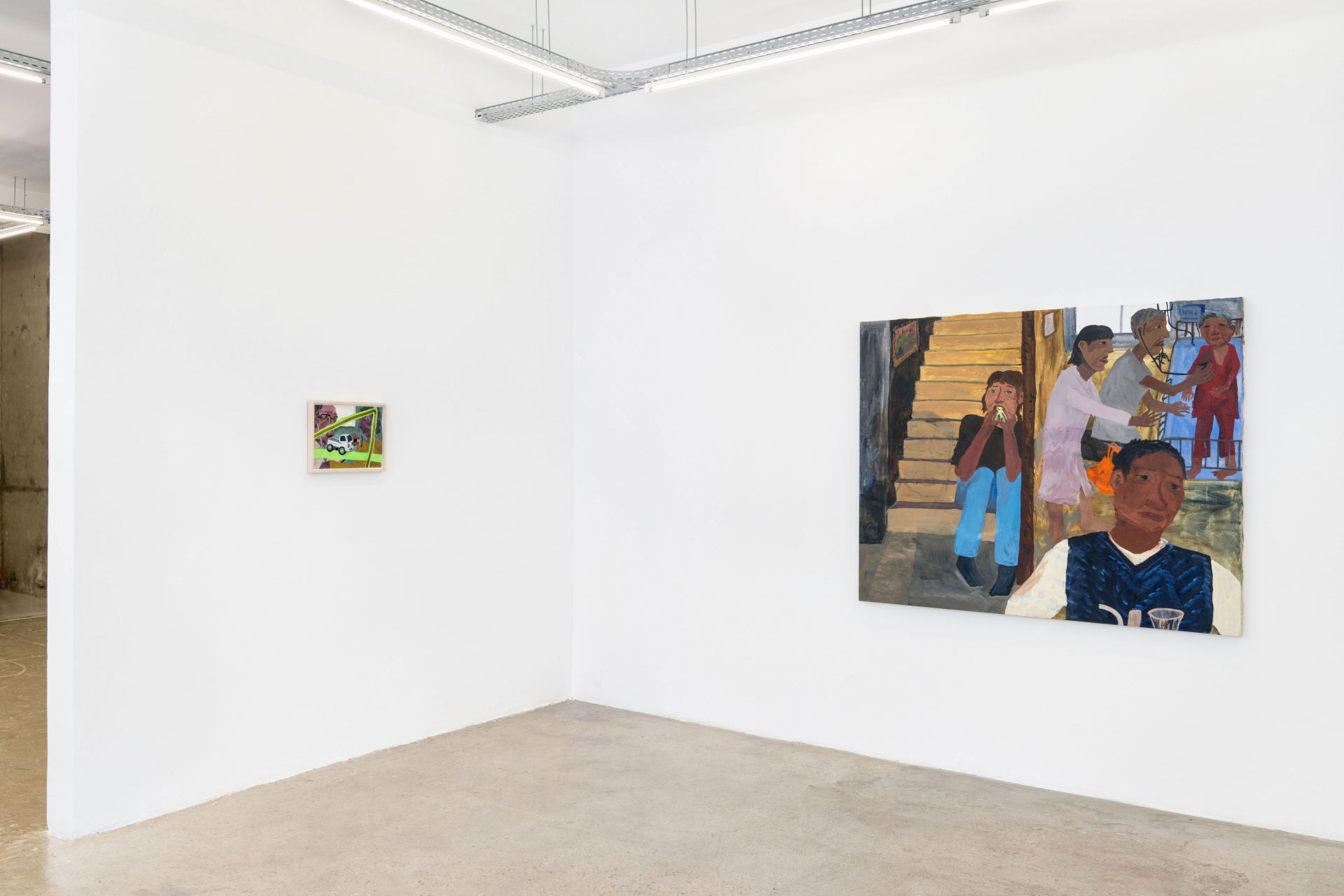
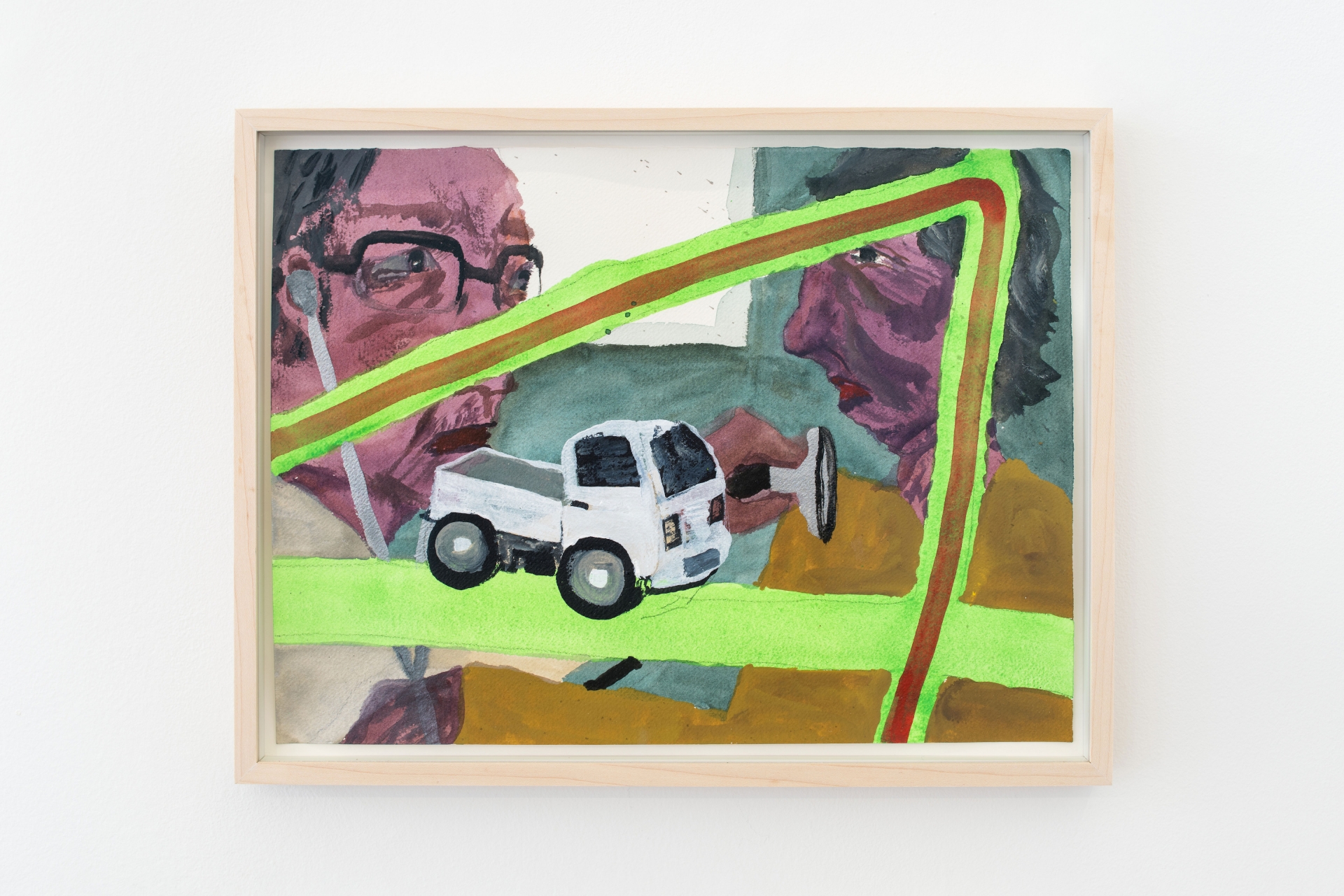
Home visitation, 2023, acrylic on paper, 28 × 38 cm
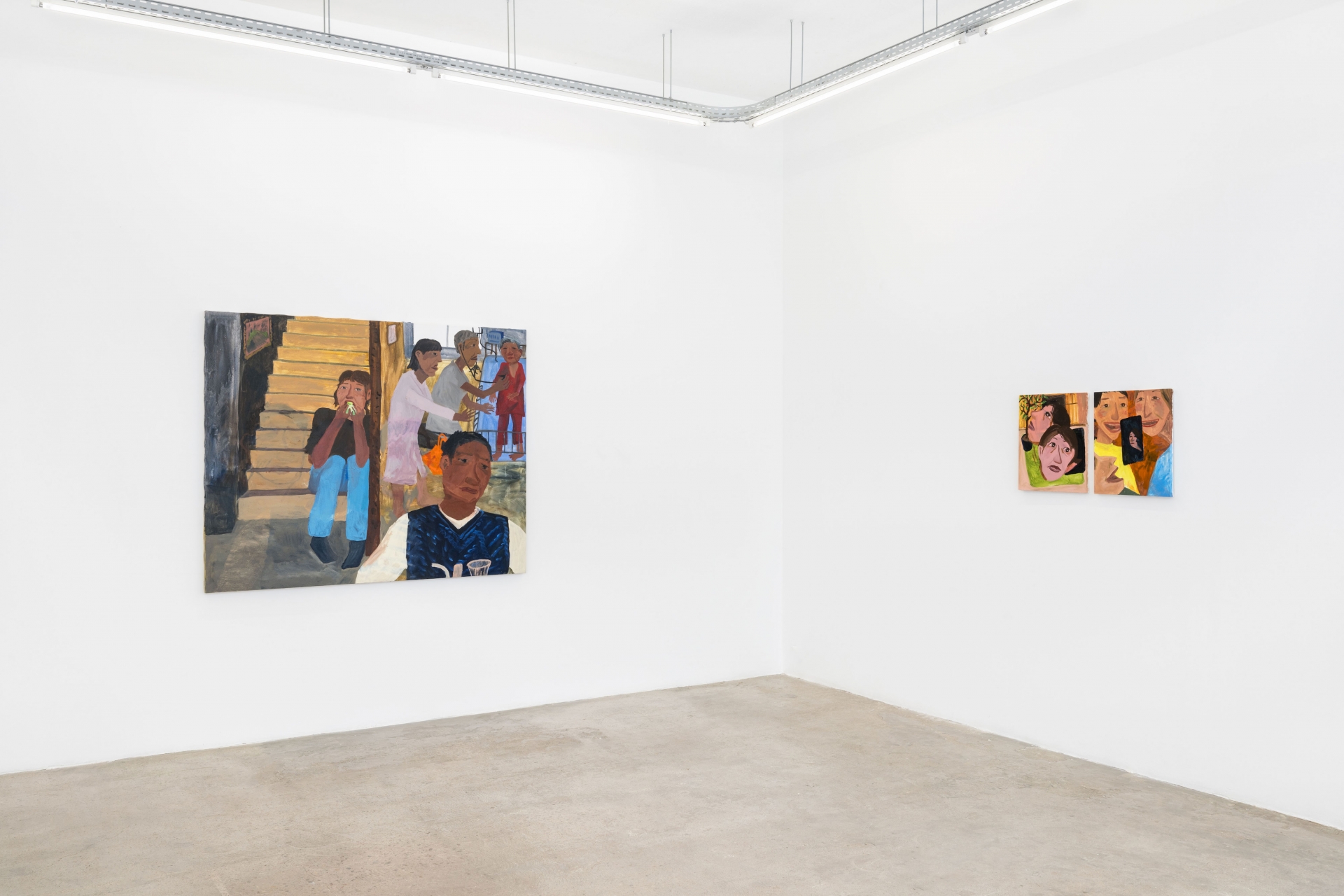

Bit hungry, 2023, Oil on canvas, 130,3 × 162 cm
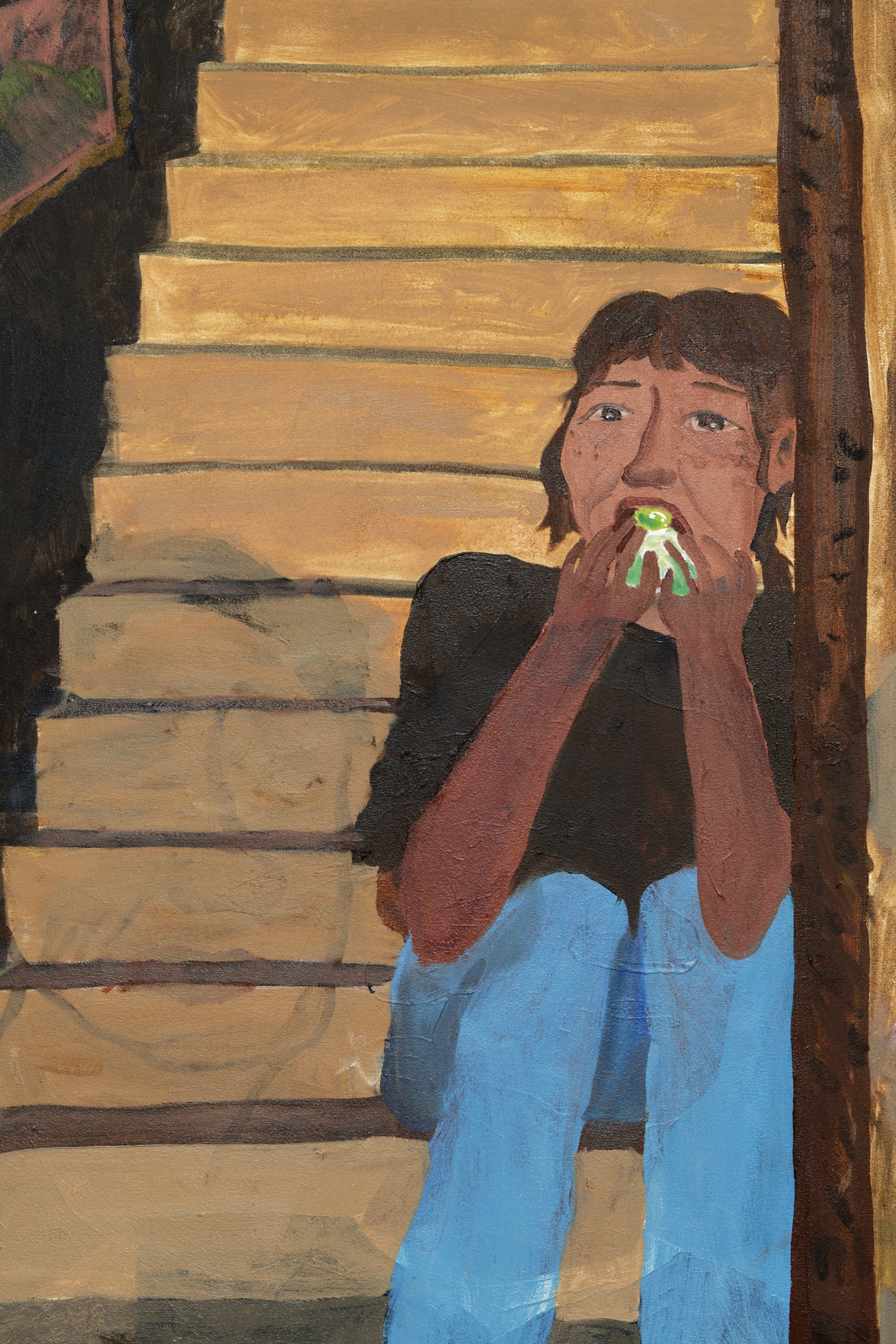
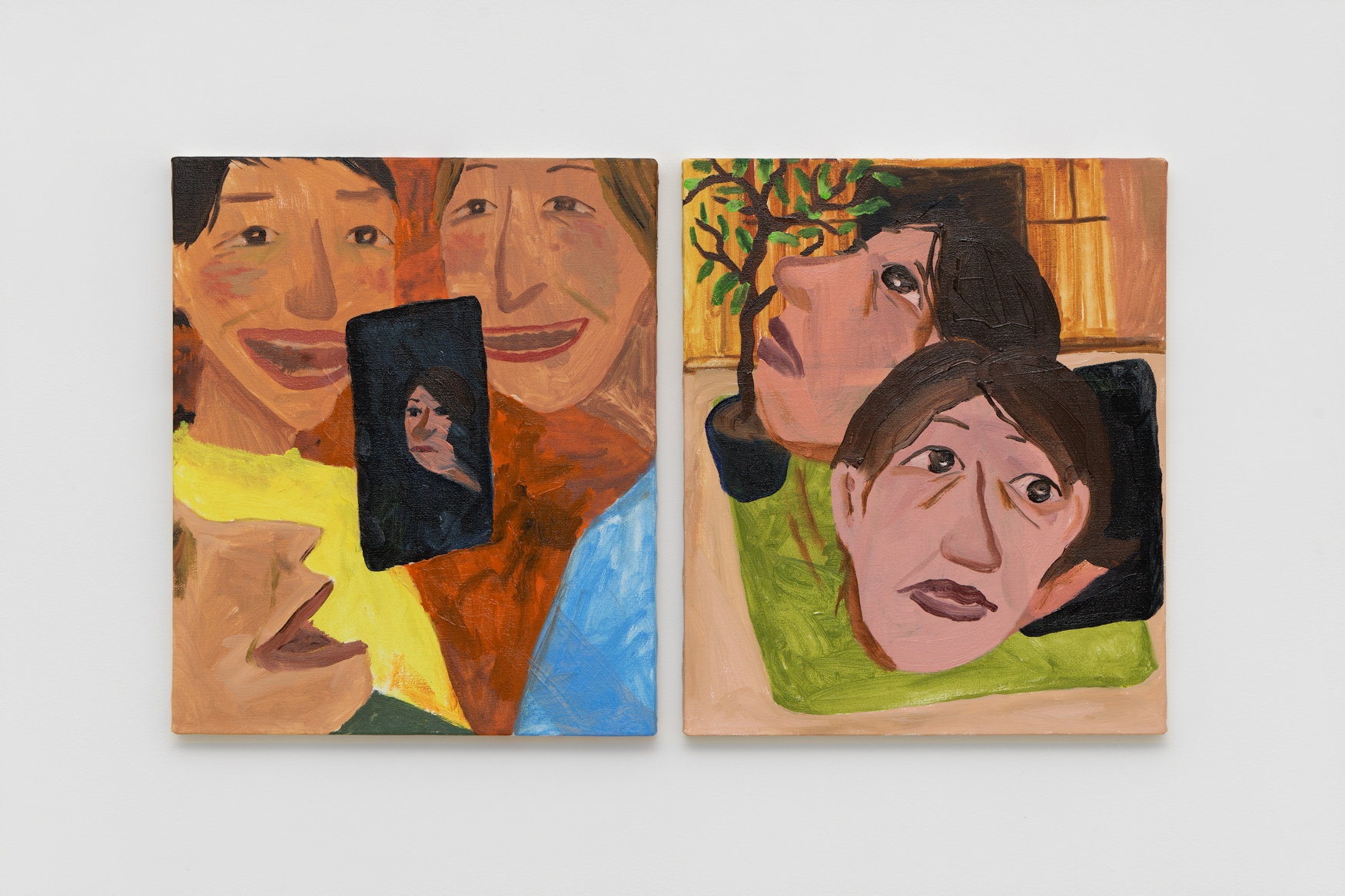
Peeking, 2023, Oil on canvas, 45,5 × 38 cm each (diptych)
« She always asks people a lot of questions, digging deep into their lives. But she ne- ver talks about herself,» said my friend, and we both agreed that there are people like that, right?
「彼女は、いつも人のことを根掘り葉掘り聞いてくる。でも、自分のことは全然話さない。」と 友達が言っていて、そういう人いるよね。と私たちは盛り上がりました。

Exhibition views, Crèvecœur, 2023. — Photo: Martin Argyroglo
Work views — Photo: Aurélien Mole
PARIS — Cascades
9 rue des Cascades
75 020 Paris – France
from Tue. to Fri.: 10 a.m. to 6 p.m.
Sat.: 11 a.m. to 7 p.m.
and by appointment
PARIS — Beaune
5 & 7 rue de Beaune
75 007 Paris – France
from Tue. to Fri.: 10 a.m. to 6 p.m.
Sat.: 11 a.m. to 7 p.m.
and by appointment
Contact
PARIS — CASCADES: +33 (0)9 54 57 31 26
PARIS — BEAUNE: +33 (0)9 62 64 38 84
info@galeriecrevecoeur.com